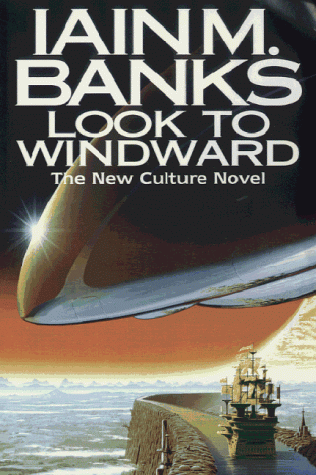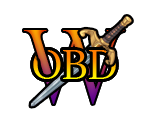 |
| "Don't let the pretty cover art fool you. These guys are hardcore" |
Background Information
The Culture is a science fiction universe that appears in a series of novels written by Iain M. Banks.
Standing in the Battledome
The Culture is considered to be on the top - tier of scifi civilizations that don't have reality warping/uberpowerful time manipulation. In space combat, Culture ships can move at sublight speeds, use warp drive, and hyperdrive, which can exceed 100 trillion times lightspeed for short periods of time (but the maximum sustainable speed is several hundred thousand times lightspeed). Culture ships are controlled by Minds, superhuman artificial intelligences that can simulate entire universes, and flight entire fleet battles across hundreds of light-years in microseconds. Their weapons include:
- Pancakers: Increases the gravity on an enemy ship to flatten all of the crew
- Lineguns: Powerful gravity beams - capable of destroying other Culture ships. Used by the Culture but more often by other civilizations
- CREWs: Short for "Coherent Radiation Emitting Weapon", it's basically a laser, but very powerful (makes Star Wars turbolasers look like pea shooters)
- CAM: Short for Collapsed AntiMatter, these are small bombs delivered via displacer which explode with a force of 50 petatons
- Nanoholes: Black hole bombs delivered via displacer. A single nanohole can destroy a planet.
- Plasma charges/bombs: Some kind of explosive delivered via displacer. A yield was never given, but they are considered strong enough to harm Culture ships
- Displacers: Think of transporters from Star Trek, except they can't be blocked by any known technology short of Excession-level and use wormholes to beam things over to enemy ships or beam parts of the ship away, etc. They can also be used to beam enemy weapons inside of your own ship away
- Gridfire: Considered the Culture's strongest weapon, it opens up a portal to the "Grid", a region of infinite energy past hyperspace, effectively submerging entire areas of space in a sea of energy that has been compared to the energy density of the Big Bang. Considered too slow for use on other ships, since it takes a few seconds to initialize. It is mostly used on stationary targets
- Effectors: Not so much a weapon as a tool, effectors have many functions. They can serve as sensors, eavesdropping on people from over 2500 light-years away. They can also drain energy from targets, or pump more energy into a target to overload them. They are capable of reading and reprogramming computer systems, and organic minds. Generally, the only thing that can block an effector in the Cultureverse is another effector (with a few exceptions).
Defenses on Culture ships include:
- Fields: Basically energy shields, they are strong enough to easily stand up to a supernova, and can be reformed into any shape.
- Trapdoor system: A mechanism that transports any unwanted energy inside of the ship into hyperspace, so it can't be destroyed by internal attacks. It was stated that you could set off an H-bomb inside of a Culture ship if you were right next to it, and all of the energy would be instantly transported into hyperspace so it would seem like nothing had happened at all.
Culture ships are also powered by a grid tap, which gives them effectively transfinite energy. Their ships can attack from thousands of light-years away and snipe at targets while they are safely hidden in hyperspace.
Culture ground combat is similar, with combat drones having their own, smaller and less powerful effectors, displacers, CREWs, and fields, as well as knife missiles, which are semisentient weapons that use fields and effectors to destroy opponents. A Culture gelsuit is a combat suit for oganic beings to wear, which has its own effectors and can survive being in the middle of a volcanic eruption unharmed.
There are several other civilizations in the series that are on par or superior to The Culture.
The Idirans were able to fight the Culture effectively, but were eventually defeated.
The Homomda were stated to be superior to the Culture in the first book, but by the later books it seems that the Culture has matched or exceeded them.
The Zetitic Elench is an offshoot of the Culture which is slightly inferior.
Many other such civilizations exist, but are generally unnamed.
The Culture has a large presence all over the Milky Way Galaxy.
There are also several "Uber - Races" in the Cultureverse which are usually vaguely defined in terms of abilities.
The Excession is a being from another universe, which was speculated to have been built by a powerful, older civilization. Its technology was as far beyond the Culture as the Culture is beyond cavemen. It was feared that the Excession would destroy the entire universe by filling it completely with gridfire, but it did not.
The Sublimed are beings that have transcended their physical forms and become godlike. Any sapient being in the Cultureverse can sublime. The sublimed seem to be almost completely uninterested in the affairs of lesser races, even if they were highly vested in them in their previous lives. Very few facts about the Sublimed are known, other than they created an afterlife for a certain race, rearranged stars to spell their names, and apparently did not consider the Excession to be impressive (although this last point was speculation on the part of a character).
Limitations
The Culture is unable to travel through time. In fact, Iain M. Banks stated that time travel is against the laws of physics in the Cultureverse.
The Culture cannot travel to other universes due to the grid separating them. The Excession and the Sublimed can, though.
There are 3 known natural phenomena that can destroy a Culture ship: A black hole, a white hole, and colliding with the Grid.
In the OBD, the Culture is rarely used, although one notable use was by Endless Mike in order to bait Phenomenol. He didn't take the bait.
Character Profiles
- ROU Killing Time
- The Excession
Civilization Profiles
Note: Some links on this page are affiliate links where, at no further expense to you, I receive a small commission should you purchase an item. For more on these, see our disclosure policy.
